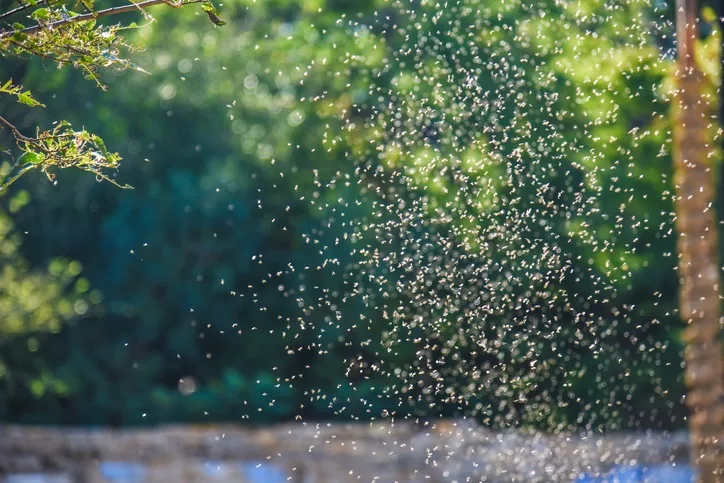
Swarms of midges cover lakeshores in Ontario
Every year without fail, thousands of these little flies emerge and cover everything from trees, to rocks, to sides of homes along the lakeshores. This year people have really taken notice of them, but experts say there aren't more of them than usual.
Every year around the end of May we see an emergence of little flies swarming the lakeshores of the Great Lakes and other smaller lakes around Ontario.
People call them all sorts of names and have the misconception that they are all the same.
“I will have to give you a scientific name: Chironomus plumosus,” said Stephan Marshall, a retired professor of entomology at the University of Guelph. “It's got a number of vernacular common names. Lake flies is one common name people call them around here some people call them fish flies, but that's confusing because we also will apply that name to another aquatic insect that will emerge by the million in about four weeks from now. Mayflies, even more abundant than the midges.”
It may seem like there are more midges this year than any other year, but that’s not necessarily the case.
“It's one particular species of chironomid midge. Now there are other species of chironomid midges emerging all the time from February through to December. I'm sure that the populations vary from year to year due to a variety of causes but I don't see this being any more abundant this year than any other year,” said Marshall.
Although the midges may be a bit of a nuisance, they are crucial to the nutrient cycle and they provide food for fish and birds as well.
“People will appreciate their importance as bird food because I think a lot of people understand how a lot of insect-eating birds have declined in the past few years,” explained Marshall. “Many insects have declined in the last few years, so to have a species like this which is arriving in great abundance for at least a couple of weeks, is a very good thing.”
Visit our Complete Guide to Summer 2020 for an in-depth look at the Summer Forecast, tips to plan for it and much more
THE LIFE CYCLE
The midges are phenomenally important to the Great Lakes and they begin their life cycle in the muck at the bottom of the lakes.
“They make these cool little silkin tubes, like salivary secretion tubes, and the filter stuff algae and organic material from the muck in the bottom of the lake, feed on that and develop until the fall and then they slow down in the cold months of winter and then they sort of boot it up again when the ice goes out in Spring and finish their larval development,” said Marshall.
They then form into a pupa, and once they are ready to go, they come to the surface and the adults emerge. This happens every year at about the third week of May.
“The males form these massive swarms and they hang out in these big swarms sort of dancing up and down until a female comes in and then they drop out, mate quickly,” Marshall explained. “The female goes back out over the water and drops eggs onto the water surface.”
He said the masses that you see on the lakeshore are probably mixed males and females that have blown onto shore.
“The numbers are so enormous, because you think of the volume of water that these things are living in, the numbers are so enormous that these windrows piles are pretty striking,” he added.
The non-biting insects don’t live very long.
“Midges are fairly short-lived, as is true for that whole group of flies the lower diptera of flies. The adults will probably live around a week, more or less give or take a couple of days and the emergence. [They’re] probably in the vicinity of 10 days to 15 days.”
People will only see this midge for two to three weeks at most, but another insect will emerge the last week of June, also known as the fish fly or mayfly.
“It's a totally different order of insect,” Marshall explained. “Midges are flies so they have a complete life cycle with a larvae -- a legless-larvae and a pupa and an adult. The things that most people call fish flies, you have to be careful with these common names because they name different things different places, the normal group to which we term the fish flies, are mayflies. And mayflies are a group of insects that don't have a pupa and they develop as a nymph that swims to the surface and then emerges to a much larger winged-adult then we're seeing with these midges.”
He joked that we at The Weather Network would be calling him in late June with new images and videos from our viewers in similar shock to these swarms of insects.
Watch the video that leads this article for my full interview with Stephan Marshall.











